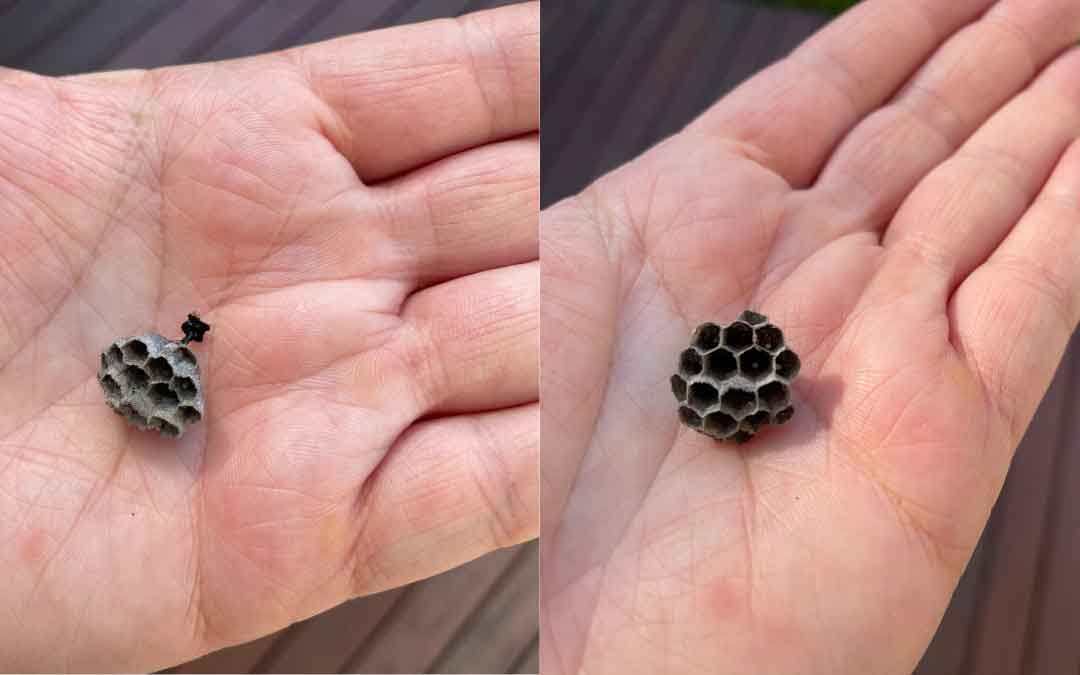Wasps we should welcome

At primary school I had a teacher who was very concerned we’d swallow a wasp in a can of soft drink. He often told us to use a straw (before single-use plastics became recognised as an environmental disaster). He was worried about the aggressive invasive European wasps, not our much more placid native ones.
We have thousands of types of native wasps in Australia and nearly all are very unlikely to harm you, and most are very beneficial for our gardens. I’ll focus on just one type – paper wasps – in this article.
There are more than 30 types of paper wasps found all over mainland Australia. Unfortunately, we also have invasive European and now Asian paper wasps as well as the commonly known aggressive European wasps in Victoria.
Why are they called paper wasps?
Female paper wasps chew up bits of wood and plant fibres, mixing them with saliva to create hexagonal cells in a comb shape from the paper-like pulp. She then lays her eggs in the cells, which hatch into little maggot-like larvae.
Becoming queen
Any female paper wasp can become a queen. If she builds a small nest herself and lays some eggs, she can then recruit those wasps to be workers for the next generation of eggs she lays. She feeds her larvae caterpillars.
Pollination heroes
Adults feed on nectar and are important, yet often unrecognised garden pollinators. It’s interesting that native bees are adored, but people seem to generally dislike our native wasps. European wasps however are attracted to food and drink, open compost heaps, and pet food left outside.
Australian paper wasp or European wasp?
Australian paper wasps look not dissimilar from European wasps but there are some key ways to tell them apart.
- European wasps are aggressive, but paper wasps are generally not. Our native paper wasps can still sting you but are extremely unlikely to unless you are attacking their nest.
- European wasps usually nest underground or in building cavities (so you’ll rarely see them) and produce a basketball-sized nest.
- Paper wasps nest under roof eaves, pergolas or in trees (see the image of a nest in my camellia bush from a couple of years ago) and produce golf-ball to small plate-sized nests.
- They often look similar. Australian paper wasps have narrow ‘waists’, and yellow, brown, or black banding and orange-brown antennae. European wasps also narrow where the thorax and abdomen meet and feature bolder yellow and black banding and black antennae.
What to do if you see a nest
If it is an Australian paper wasp nest and it’s somewhere you don’t have to touch, leave it be. Nests are rarely used for more than a year and unless you touch (or very closely approach or prod) the nest they are unlikely to do you or your family any harm. If it is somewhere you or your children and/or pets cannot avoid them, you should contact your local council for advice.
If it’s a European wasp nest and you can find it (they travel up to half a kilometre to seek food), you should report it to your local council. Some councils (including Banyule and Darebin) will remove the nest, whereas others such as more rural councils like Nillumbik may refer you to a pest controller if it’s on your property.
DIY extermination options
It’s important to note that while European wasp pesticides are available on the shelves at hardware stores, you should be extremely careful if choose this option and ensure you have researched when to do it and how to protect yourself and mitigate risks to other beneficial insects first.
Words and photos by Jen Willis
